Since the 1980s, the quality and cost gaps that existed in SC paper and LWC No. 5 paper have steadily decreased. Compared to LWC paper, the quality of SC paper is steadily increasing, and the quality of LWC paper has not changed substantially in the past 10 years. The new wet gap forming technology in the wet section eliminates the two sides of the paper, which is the key to achieving the new quality of the SC paper. This is an example of equipment improvement that promotes variety development.
All European manufacturers have produced an SCA+ product and there are several SC products on the US market. SCA products have not matured in Europe in North America. For example, in Europe, there are more uncoated papers containing groundwood pulp than in the United States. The competition among manufacturers has increased the quality of light-coated paper. Between 1985 and 1997, the global average growth rates for light coated paper, fine paper, and SCA were 2%, 4.9%, and 5.6%, respectively. The use of SC paper in North America has greatly exceeded that of the past 20 years, and the existing annual consumption is approaching. 2 million tons.
Moreover, the price difference between SCA+ and LWC is about 10%-15%, and the price is a key issue in the LWC market. For retailers, paper is half the price for leaflets and inserts; for publishers, paper and postage together account for one-third of the cost of magazines or catalogs. However, due to operational and strength issues, printers who initially use SC paper for offset printing may increase their fees rather than lower prices for publishers.
The dispute between SC and LWC paper is centered on cost and quality, and the quality issue is an open challenge (eg, LWC paper is superior in printing glossiness, stiffness, bulkiness, opacity, printability, both Offset printing can also be gravure; while SC paper whiteness and paper gloss is comparable to LWC paper, but the price is cheaper). When manufacturers producing two kinds of papers are preparing for the upcoming market share competition, the final choice will be determined by the consumer. Although the impact of SCA+ on purchases is unclear, the advertising industry's development trend will play a major role in the future consumer market because advertising uses almost 50% of paper products.
The variety revolution that is taking place in the paper industry today is not only SC and LWC paper. The cross-competition among various papers is also very popular. In particular, LWC paper is also subject to competition from No. 3 paper. In the past 10 years, the price of non-groundwood coated paper has been reduced to replace LWC paper. Since 1993, in the United States and Europe, the percentage of non-polished coated paper in the magazine market has been rising. In this way, fine paper, LWC paper, and high value-added uncoated paper compete in the same market. The amount of substitution between paper varieties may be determined by the relative quality, availability, and price difference among various papers.
From 1990 to 1996, the growth rate of demand for LWC paper and No. 3 paper in the United States was -1% and 10%, respectively. Because the market has been lost to other types of paper, it is expected that the growth of coated paper containing groundwood may be reduced in the future. Because the price of No. 3 paper is reduced, it can achieve an increase in quality/cost ratio without any improvement. Today, the consumption of coated paper containing groundwood is decreasing, partly due to efforts to reduce inventory. Due to the amount. The paper price increase was announced in July 1998, which stimulated an increase in inventory, but the price increase was not compensated later. In August 1998, the stock of coated paper containing groundwood reached the highest level since 1997. Because woodfree coated paper is more accessible and attractively priced, it is expected that its demand will increase significantly.
Due to the sluggish newsprint market, newsprint paper mills are turning to the production of film-coated offset printing papers, so LWC papers may also be subject to competition from these manufacturers. Attention should also be paid to the competition from imported products, especially according to the current cash exchange rate. The increase in imports has a great impact on the LWC market. For example, from May 1997 to May 1998, wood-paste coating from Asia was applied. Paper imports have risen by 40%. The slump in the Asian market also caused paper to be resold to the United States and Europe. When the U.S. production capacity does not grow too much, it can meet any long-term demand growth through imports. The production capacity of printing and writing paper is estimated to increase by only 0.8% per year; it is expected that the growth rate in 1999-2001 will be 0.9%, which is even lower than the slower growth in 1975-1977. All these factors, as well as the severe market conditions now, make the LWC paper market very competitive.
7. Looking to the future of lightweight coated paper, what will it look like? The evolutionary trend of the variety makes the papers more confused. Unlike the previous paper No.4, the whiteness was set at 74%-78%, and the No.5 paper had a whiteness of 68-73%. As the amount of CaCO3 increases, the whiter paper will be considered No. 4 and No. 5, rather than strictly following the rules of whiteness and glossiness. How will our current breed system adopt this approach? Perhaps it will develop towards the kind of structure in Europe, which is mainly based on the composition of the slurry, the content and the ration of groundwood pulp. Perhaps the paper variety should be determined according to the consumer's specific printing application, rather than determined by the type of paper structure. Perhaps the diversification of paper species will open up new markets for the future of paper.
Cost efficiency. The pace of global industrial cooperation is expected to continue without stopping. "Efficiency" and "economy of scale" will always be popular concepts. Due to factors such as increased postage costs, rising freight rates, and efforts to obtain high returns, quantification will be further reduced. First of all, important changes will take place in the way of coating and finishing. In a mature industry, all of these will face the pressure of increasing costs. If it is difficult to make profits in the light coated paper market in the past few years, it may be even worse with the start of the new century. The ability of coating manufacturers to determine the demand for their products in future markets is the key to their competitive advantage in the global market. In short, producing the best quality paper at the lowest cost is faster, better, and more cost-effective, with less investment and more harvest is the future goal.
Water Curtain fountains generally include a bottom reservoir, a complete set of Water Feature fountain equipment (including: Pump, overflow gutter, water filler, power supply device, line spring conduction plate and underwater lighting) as well as a water tank located at the top, his application direction is more extensive, exhibition hall, exhibition hall, urban planning museum, science and technology museum, museum, commercial street big screen display, and stage, KTV bar, and living room can be used. Water plays a significant role in improving the living quality. Outdoor Fountains,Appropriate waterscape structure can enrich the space environment and adjust the environmental climate to enhance the comfort of living. At the same time, water is the most spiritual and active factor in the ecological environment. The organic integration of water, green plants and sculpture works will make people feel back to nature. In addition, Outdoor Fountains a large area of water can absorb dust in the air and play a role in purifying the air, which is of great benefit to the health of residents. There is a saying that water is gold, with the water curtain will only be the icing on the cake, in the road of business to go more stable, further.
| Name |
Corten Steel Garden Water Feature |
| Material | Corten steel |
| Size | 1200*400*1200mm or customized |
|
Surface |
Pre-rusted |
|
Technology |
Laser cut |
|
Application |
Outdoor |
| Steel thickness | 2 mm |
| Packing |
Pallet |
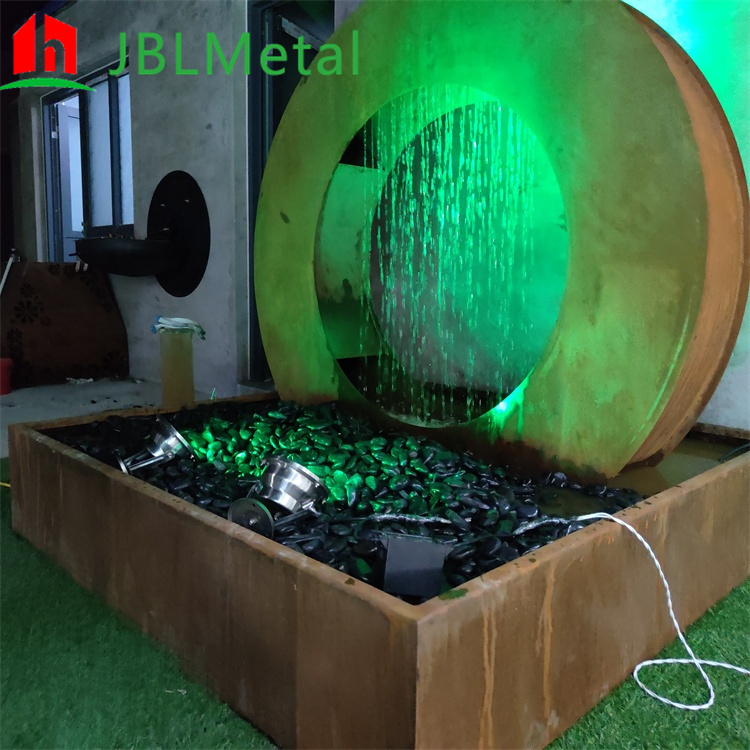
Features:
1. Corten steel – forms a stable, self-protecting rust that requires no painting or maintenance, for a fashionable aesthetic which doesn't compromise structural strength
2. Cascading blade - emits a pleasing sheet of water3. White LED light - built into the cascade, illuminates the feature
4. Suitable for outdoor use
5. Self contained - no need for a continuous water supply
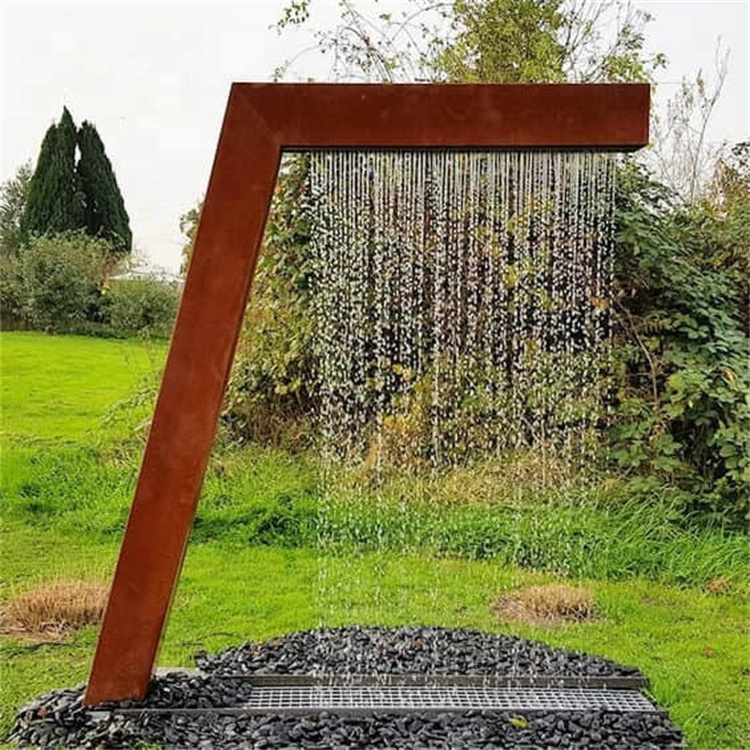
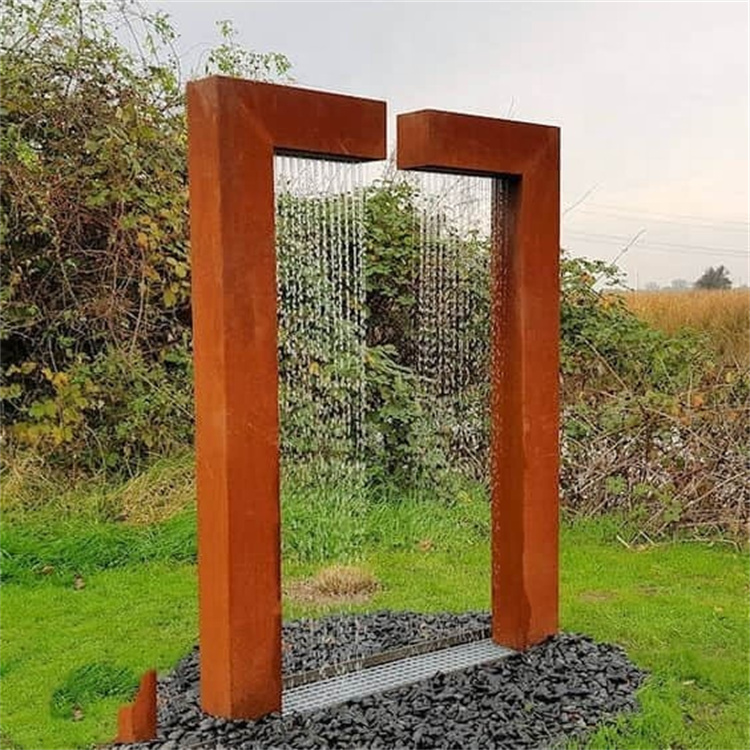
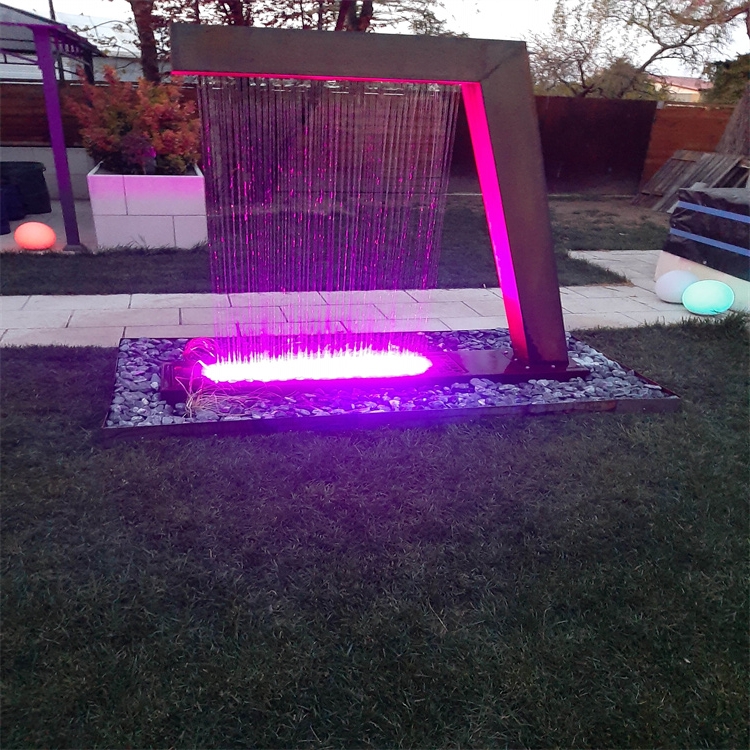
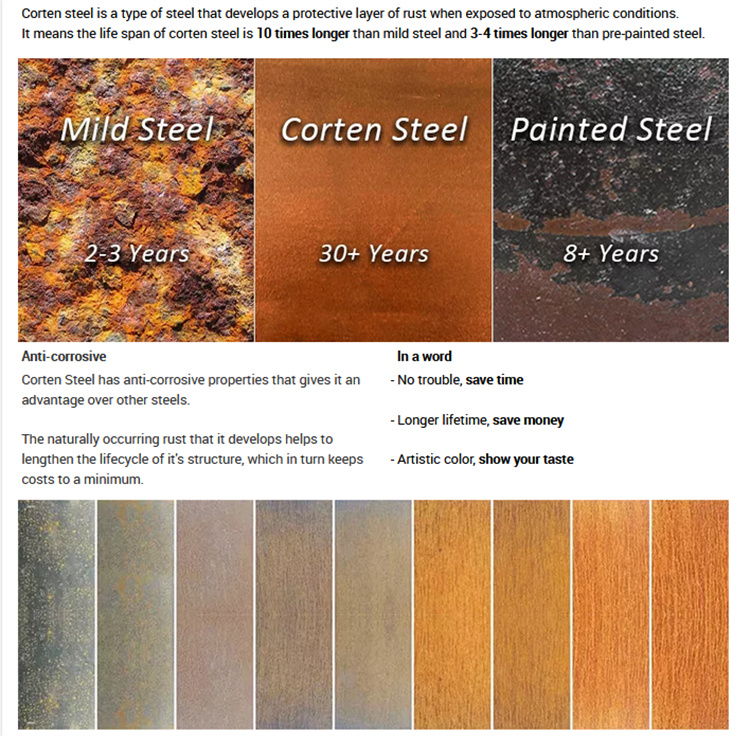
Water Fountain,Outdoor Fountains,Outdoor Fountains,Waterfall Fountain
Henan Jinbailai Industrial Co.,Ltd , https://www.gardensteelarts.com